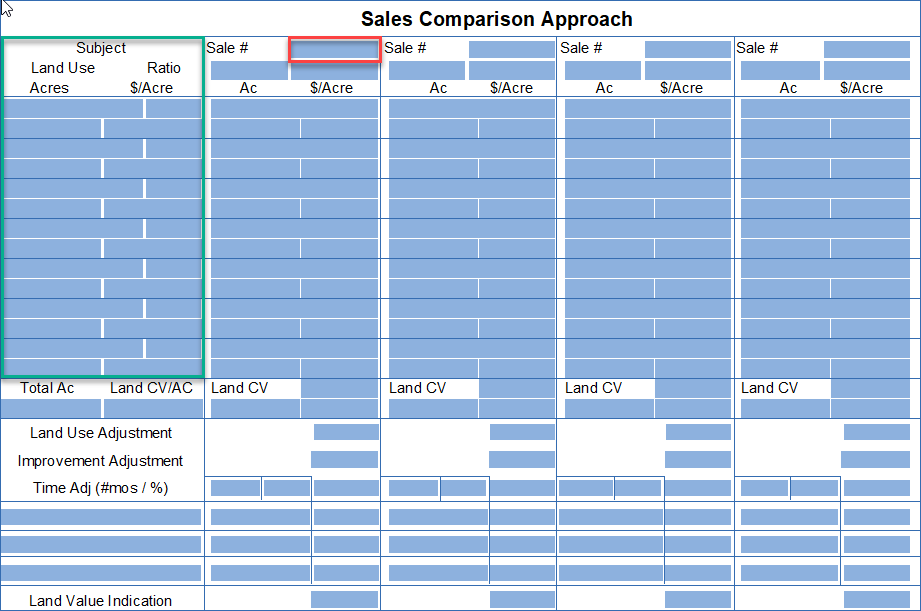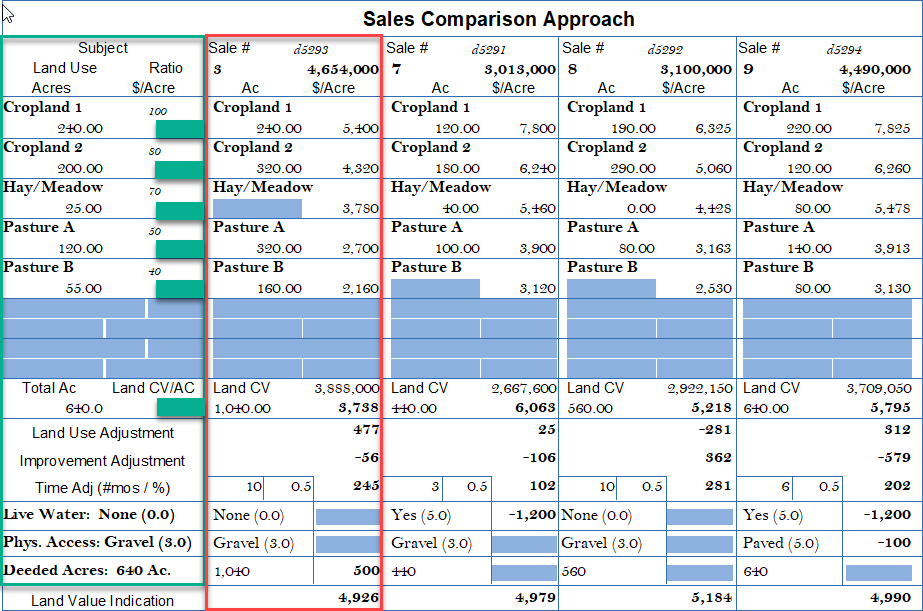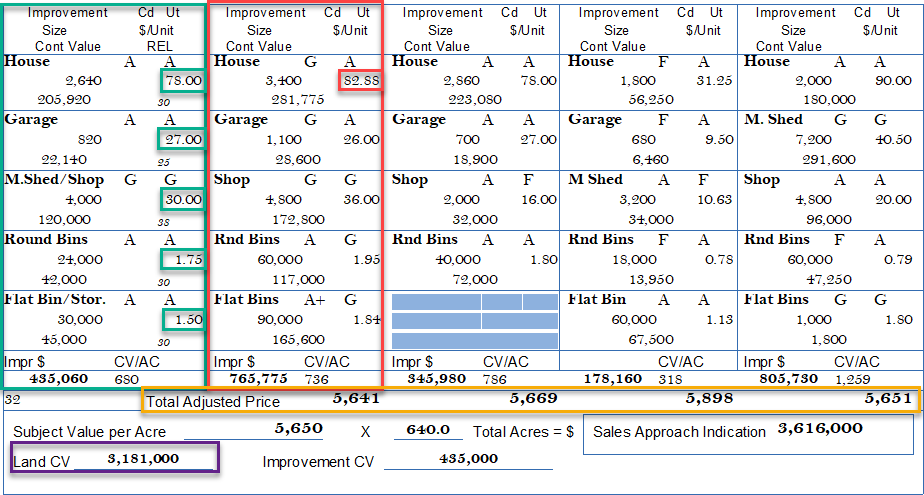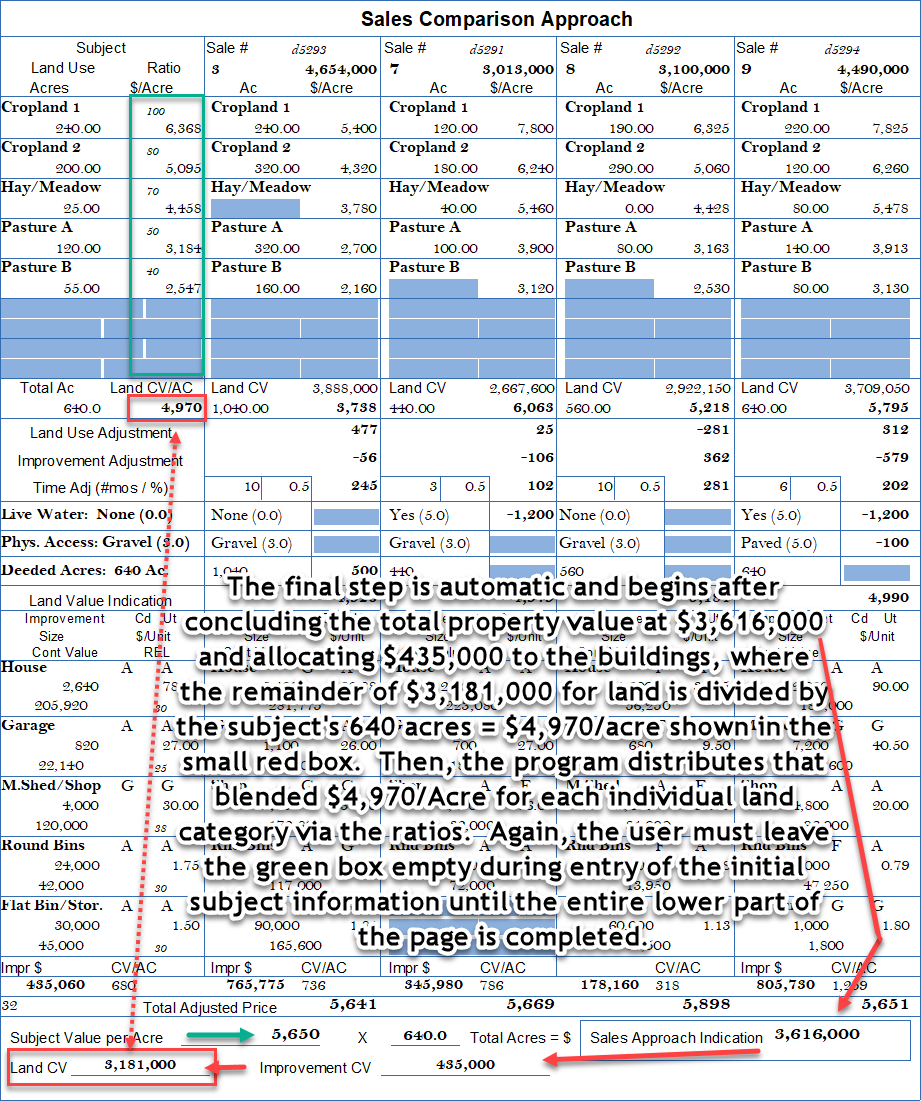FCS Sales Comp. Approach
![]()
Sales Comparison Approach
Initially, this form seems daunting at first glance before it is filled. As with most of the subject information, it flows from the Subject QuickStart page and portions of this page will be filled once it is pulled into ClickForms and the QuickStart has been filled out. A sample of how the information flows into the mostly blank form initially is provided for clarification.

Subject (green) populated from the Subject QuickStart page or can be entered manually. The sales can be called in:
- directly from DataLog (red box) using “d-numbers”, e.g., numbers automatically assigned by the program and specific to each sale
- directly from DataLog using “i-numbers” for each sale (upper left corner of sale record) the user manually enters upon starting sale documentation, or
- as shown above, pull sales from DataLog into the ClickForms container (the demonstration appraisal in AgWare’s documentation examples); then using the “tool” tab and “auto-number sales” function which assigns numeric numbers sequentially to each, or
- you can manually number the sales in the manner desired.
The filled-out version is shown below.

Again, the subject is identified in green (leave solid green fields blank --- they will be transferred back from the bottom of the page !!!). The first improved sale (Sale 3) is shown in red. The allocated prices for each land type are displayed, then adjusted for land-mix, improvements (buildings adjusted for difference between the sale structures and subject buildings at bottom of page); then, compound time adjustment, and “other” factors shown as “live water”, “physical access”, and “size” for this example. Note, only three (3) variable elements are possible within this form. At the bottom of this “block”, each sale provides a separate indication of the subject’s land value after adjustments.
The building grid and summary by this approach shown below.

Formatting was added to obtain visual separation from the original spreadsheet-like format. Users should craft their own view to assist the reader.
Most of the subject’s information transfers from the Subject QuickStart page. The exceptions are the small green boxes, which represents the appraiser’s conclusions from viewing the sale improvements structure by structure --- then opining to each corresponding subject building using the “quality” and “condition” abbreviations. Simply, the subject’s house is A/A; while Sale 6 (red box) has a G/A house, or slightly superior. Thus, some conclusion less than $82.88/sf (small red box) is suggested for the subject’s house. The three (3) houses shown for the remaining sales are an extension of that initial reasoning, i.e., the “bracketing” continues until the appraiser has sufficient basis to form a final opinion about the subject’s house --- ultimately at $78.00/sf. Each user might opine a slightly different conclusion, but that is expected given the imperfections in the market and the “analysis procedure” applied (building residual for all sales --- after land).
This process is applied for each subject building, i.e., garage, machine shed/shop, round bins, and flat bin/storage building. From the land and buildings indications from each sale (yellow box), the appraiser selects the value most representative of the subject’s value via this approach.
The final value is calculated at $5,650/acre X 640 acres = $3,616,000 (rounded); then allocated between land and buildings ($435,000 for buildings leaving $3,181,000 for land in this example). It is critical to understand, the land at $3,181,000 is used to transfer back up into the upper grid for the “price distribution” for the subject’s land. If the user fills the form from the “top” down, the first thought is how can you conclude the subject’s land value without seeing the sale indications. One doesn’t, i.e., the answer stems from conclusion at the bottom which is transferred. See next page.
The design is a “clock-wise” beginning with the small green arrow and $3,616,000 conclusion back around to ultimately provide the subject answers in the green and small red boxes.

